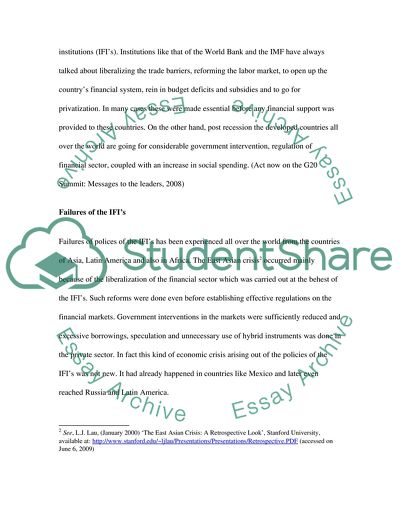Cite this document
(The Need and Primary Obstacles to the Reform of the International Fina Case Study, n.d.)
The Need and Primary Obstacles to the Reform of the International Fina Case Study. Retrieved from https://studentshare.org/finance-accounting/1555524-why-has-reforming-the-international-financial-institutions-been-proposed-in-recent-years-and-what-are-the-primary-obstacles-to-proposed-reforms-refer-to-at-least-one-of-following-institutions-the-world-trade-organization-the-international-monetary-fund
The Need and Primary Obstacles to the Reform of the International Fina Case Study. Retrieved from https://studentshare.org/finance-accounting/1555524-why-has-reforming-the-international-financial-institutions-been-proposed-in-recent-years-and-what-are-the-primary-obstacles-to-proposed-reforms-refer-to-at-least-one-of-following-institutions-the-world-trade-organization-the-international-monetary-fund
(The Need and Primary Obstacles to the Reform of the International Fina Case Study)
The Need and Primary Obstacles to the Reform of the International Fina Case Study. https://studentshare.org/finance-accounting/1555524-why-has-reforming-the-international-financial-institutions-been-proposed-in-recent-years-and-what-are-the-primary-obstacles-to-proposed-reforms-refer-to-at-least-one-of-following-institutions-the-world-trade-organization-the-international-monetary-fund.
The Need and Primary Obstacles to the Reform of the International Fina Case Study. https://studentshare.org/finance-accounting/1555524-why-has-reforming-the-international-financial-institutions-been-proposed-in-recent-years-and-what-are-the-primary-obstacles-to-proposed-reforms-refer-to-at-least-one-of-following-institutions-the-world-trade-organization-the-international-monetary-fund.
“The Need and Primary Obstacles to the Reform of the International Fina Case Study”. https://studentshare.org/finance-accounting/1555524-why-has-reforming-the-international-financial-institutions-been-proposed-in-recent-years-and-what-are-the-primary-obstacles-to-proposed-reforms-refer-to-at-least-one-of-following-institutions-the-world-trade-organization-the-international-monetary-fund.


